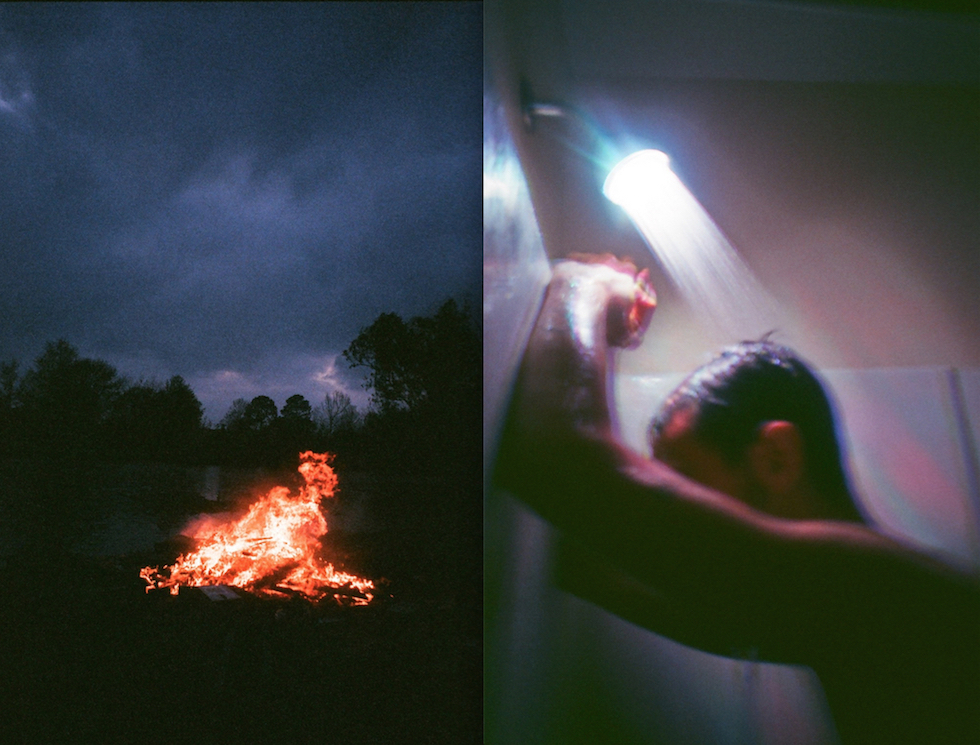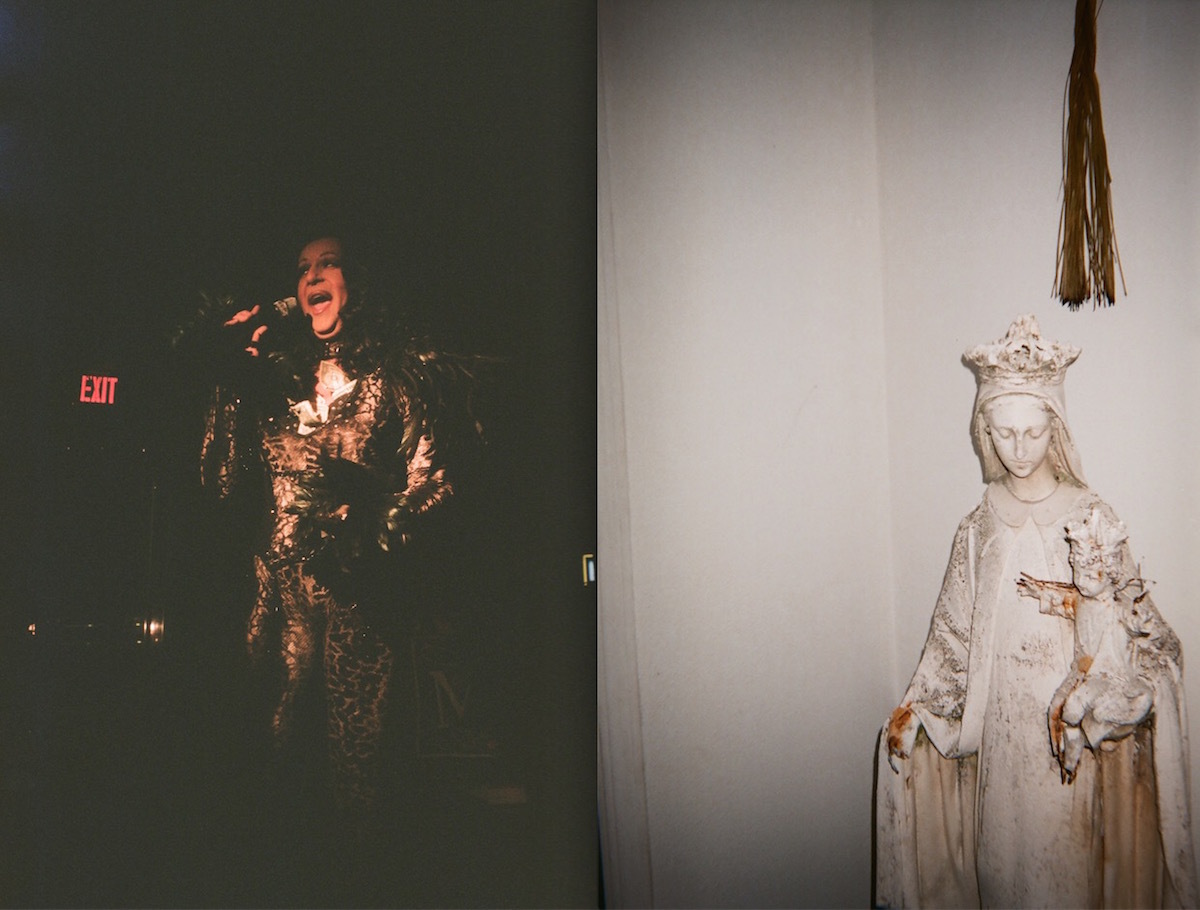Less than a year after self-publishing her first book, the heartbreaking and visceral Symptomatic of a Relationship Gone Sour: Heartburn/Nausea, which details three of her particularly abusive and manipulative romantic relationships, photographer and designer Julia Fox is releasing her second publication with an accompanying multimedia exhibition. Post Traumatic Stress Disorder, another emotionally unrestrained presentation, details her experiences during an unexpected months-long sabbatical in the poverty-stricken bayou of Louisiana. For her first solo show (curated by multitasking New York creative Richie Shazam), Fox will be exhibiting the unnerving imagery she shot with her 35mm throughout the trip. To further the experience, she will also be installing a “trap room”: an immersive space intended to mirror her bedroom while living in the drug-ridden area. Signed copies of the 84-page book PTSD will be available at this weekend’s exhibition at Magic Gallery in New York. Fox spoke to i-D about life in the very Deep South.
What was the impetus for going to the South?
When I went, I didn’t know I was going to do this. I had no idea what I was going to do. In fact, I was heading to California with my friend Harmony when my car broke down. I figured I would stay in Louisiana a week or two but after a few days I fell in love. There were times when I thought I could have stayed there forever.
Had you been before?
Yes I had visited before because my friend Jack lives there. When I went the first time I completely fell in love with it. I knew I would visit again but I didn’t plan for it happen the way it did.

Can you describe the area you were staying in and why it was special?
It was the place where they filmed Beasts of the Southern Wild. It had this magical feeling: abandoned and beautiful, a bit apocalyptic. I lived in a fisherman’s town and life was just really slow and simple. It was exactly what I needed to feel my senses again. During Christmas everyone hangs lights everywhere. They’ve never seen snow. At night, the Christmas decorations are all that can be seen in the darkness, aside from the stars and the moon. They reflect over the bayou, spraying the water all different colors. It rarely gets too cold there. Harmony and I lived far out into a marina. The house was on stilts deep in the water. It was insane when there were hurricanes. The house would shake and wobble. I’m shocked those stilts held up! We only had one other neighbor. He would shoot birds and feed them to the stray cats that inhabited the area. Sometimes I would go to open my car and a few cats would be in there.
Your neighbor shot birds and fed them to cats?
They don’t call it the “Dirty South” for nothing. My neighbor would just sit on the marina and shoot the birds, which is very common. One day he shot right over Harmony’s head. She gave him this startled look to which he replied, “I’m feeding the cats.” Also, where I lived was the end of the Earth. It was so far from anything and a lot of people abandon their animals there. There were a lot of stray cats and such.
What aspects of bayou culture did you experience?
Bayou culture is kind of nuts because it’s almost tribal. People live off the land, speak their own language, and don’t take kindly to the outsiders. It’s vulnerable because the terrain determines their existence, but also because of financial politics that are out of their control. There’s a huge heroin and meth epidemic. Oil prices are at an all-time low and a lot of people are out of work. People love to get fucked up. I think it makes the time go by faster.
How did you come to meet the people that you documented?
We just met people at night. We approached them on the street or at bars. Harmony and I don’t discriminate at all. We will be friends with anyone. Especially her; she’s really friendly and just strikes up conversations with anyone.

Any in particular that really struck you?
One woman who stood out to me was Pinky. She was a prostitute that I met on my birthday. I guess I remember her the most because she was kind of pissed when we first encountered her and by the end she was laughing and smiling. She didn’t want us to leave! But it was 9am. We really had to go.
What surprised you about the experience?
Nothing really surprises me.
Explain the idea behind the trap room, which you’ll be installing alongside the photos.
The trap room is a recreation of my bedroom in Louisiana. But it’s not just that, it’s a space that embodies a state of mind. It’s a little decrepit but still very poetic. It’ll hold a bed, nightstand, and a TV, which will be streaming a video of me on loop. Plus various other artifacts from my actual room in Louisiana.
Your intention is to focus on the post-Katrina Louisiana?
The hurricane was really traumatic and you can tell that people are still recovering. It’s still spoken about frequently. A lot of the streets in New Orleans are still blocked off. They are still rebuilding. A lot of people have told me that life just hasn’t been the same since the hurricane.
Credits
Text Paige Silveria
Photography Julia Fox
